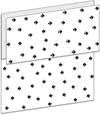The effects of aging on the perception of depth from motion parallax
- PMID: 27184057
- PMCID: PMC4974157
- DOI: 10.3758/s13414-016-1134-3
The effects of aging on the perception of depth from motion parallax
Abstract
Successful navigation in the world requires effective visuospatial processing. Unfortunately, older adults have many visuospatial deficits, which can have severe real-world consequences. Although some of these age effects are well documented, some others, such as the perception of depth from motion parallax, are poorly understood. Depth perception from motion parallax requires intact retinal image motion and pursuit eye movement processing. Decades of research have shown that both motion processing and pursuit eye movements are affected by age; it follows that older adults may also be less sensitive to depth from motion parallax. The goals of the present study were to characterize motion parallax depth thresholds in older adults, and to explain older adults' sensitivity to depth from motion parallax in terms of motion and pursuit deficits. Younger and older adults' motion thresholds and pursuit accuracy were measured. Observers' depth thresholds across several different stimulus conditions were measured, as well. Older adults had higher motion thresholds and less accurate pursuit than younger adults. They were also less sensitive to depth from motion parallax at slow and moderate pursuit speeds. Although older adults had higher motion thresholds than younger adults, they used the available motion signals optimally, and age differences in motion processing could not account for the older adults' increased depth thresholds. Rather, these age effects can be explained by changes in older adults' pursuit signals.
Keywords: Aging; Depth perception; Depth thresholds; Motion parallax; Smooth pursuit eye movements.
Figures






Similar articles
-
Aging does not affect integration times for the perception of depth from motion parallax.Vision Res. 2017 Nov;140:81-88. doi: 10.1016/j.visres.2017.05.016. Epub 2017 Sep 5. Vision Res. 2017. PMID: 28859970 Free PMC article.
-
Motion parallax thresholds for unambiguous depth perception.Vision Res. 2015 Oct;115(Pt A):40-7. doi: 10.1016/j.visres.2015.07.002. Epub 2015 Aug 22. Vision Res. 2015. PMID: 26232612 Free PMC article.
-
Concordant eye movement and motion parallax asymmetries in esotropia.Vision Res. 2008 Mar;48(6):799-808. doi: 10.1016/j.visres.2007.12.010. Epub 2008 Feb 6. Vision Res. 2008. PMID: 18258276 Free PMC article.
-
Predictive Smooth Pursuit Eye Movements.Annu Rev Vis Sci. 2019 Sep 15;5:223-246. doi: 10.1146/annurev-vision-091718-014901. Epub 2019 Jul 5. Annu Rev Vis Sci. 2019. PMID: 31283450 Review.
-
And yet it moves: perceptual illusions and neural mechanisms of pursuit compensation during smooth pursuit eye movements.Neurosci Biobehav Rev. 2012 Jan;36(1):143-51. doi: 10.1016/j.neubiorev.2011.05.005. Epub 2011 May 17. Neurosci Biobehav Rev. 2012. PMID: 21616092 Review.
Cited by
-
Aging does not affect integration times for the perception of depth from motion parallax.Vision Res. 2017 Nov;140:81-88. doi: 10.1016/j.visres.2017.05.016. Epub 2017 Sep 5. Vision Res. 2017. PMID: 28859970 Free PMC article.
-
The life-span trajectory of visual perception of 3D objects.Sci Rep. 2017 Sep 8;7(1):11034. doi: 10.1038/s41598-017-11406-7. Sci Rep. 2017. PMID: 28887520 Free PMC article.
-
Virtual Hand Illusion in younger and older adults.J Rehabil Assist Technol Eng. 2021 Dec 7;8:20556683211059389. doi: 10.1177/20556683211059389. eCollection 2021 Jan-Dec. J Rehabil Assist Technol Eng. 2021. PMID: 34900329 Free PMC article.
References
-
- Anderson GJ, Atchley P. Age-related differences in the detection of three-dimensional surfaces from optic flow. Psychology and Aging. 1995;10:650–658. - PubMed
-
- Atchley P, Andersen GJ. The effect of age, retinal eccentricity, and speed on the detection of optic flow components. Psychology and Aging. 1998;13:297–308. - PubMed
-
- Ball K, Sekuler R. Improving visual perception in older observers. Journal of Gerontology. 1986;41:176–182. - PubMed
-
- Bennett PJ, Sekuler R, Sekuler AB. The effects of aging on motion detection and direction identification. Vision Research. 2007;47:799–809. - PubMed
MeSH terms
Grants and funding
LinkOut - more resources
Full Text Sources
Other Literature Sources
Medical

